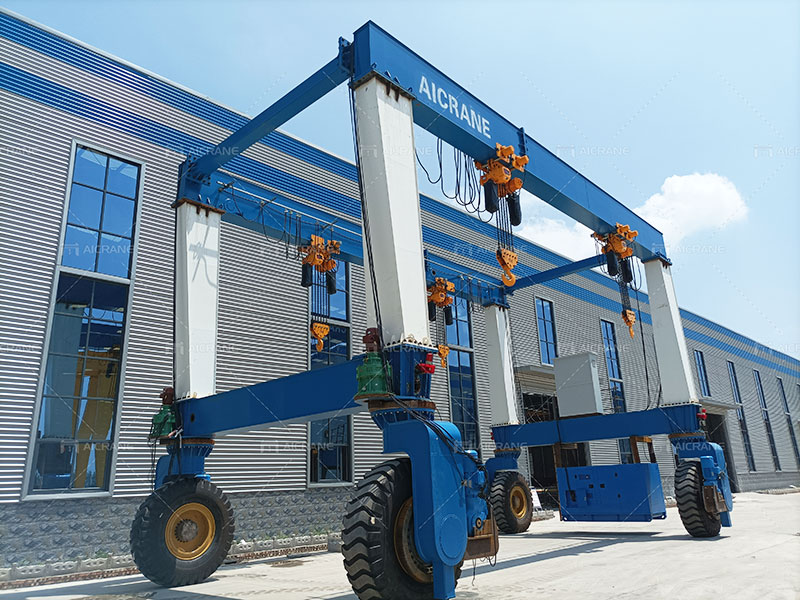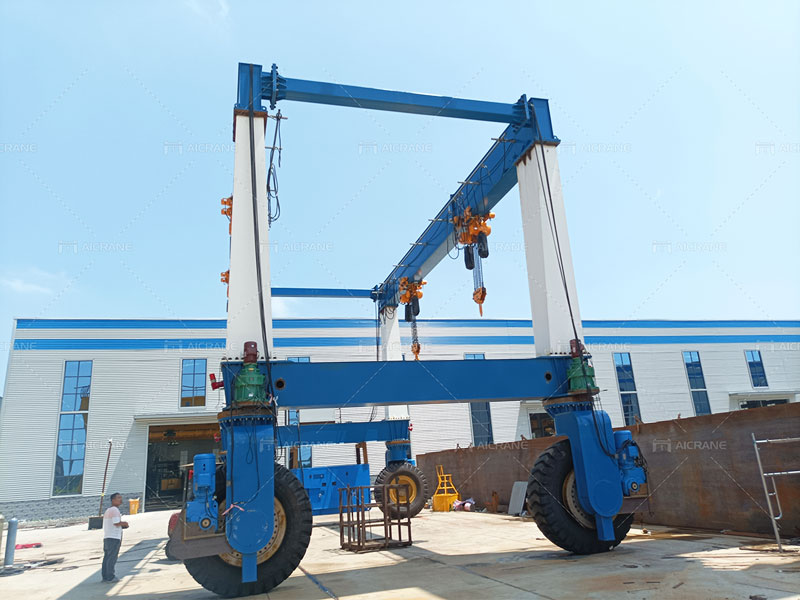In the dynamic realm of port logistics, the efficiency of cargo handling is paramount. At the forefront of this efficiency revolution are Rubber Tyred Gantry Cranes, a technological marvel designed to maximize both space and time. This article explores the operational benefits that make RTGCs indispensable in modern port operations.

Space Optimization:
RTGCs are renowned for their ability to navigate through tight spaces with unparalleled agility. Unlike traditional cranes that rely on fixed rails, RTGCs move on rubber tires, providing the flexibility to maneuver easily within the port yard. This agility translates to a more efficient use of space, enabling ports to accommodate higher container densities and maximize storage capacity.
Versatility in Container Handling:
One of the key operational benefits of rubber tyred gantry crane(козловой кран на пневмоходу) lies in their versatility in handling various container types. With the ability to lift and transport both standard and specialized containers, including those with reefer units or oversized dimensions, rubber tyred gantry crane offer a comprehensive solution for diverse cargo requirements. This adaptability ensures that ports can efficiently manage a wide range of cargo with a single piece of equipment.
High-Speed Operation:
Time is of the essence in port operations, and RTGCs are designed with speed in mind. The rubber tires, coupled with advanced control systems, enable these cranes to achieve higher operational speeds compared to traditional counterparts. Faster movement between container stacks and swift loading and unloading contribute to reduced vessel turnaround times, enhancing overall port productivity.
Reduced Infrastructure Costs:
The mobility of rubber tyred gantry crane eliminates the need for extensive rail or runway systems that traditional cranes require. This reduction in infrastructure requirements translates to cost savings for port operators. Ports can allocate resources more efficiently, investing in technology that directly enhances operational efficiency rather than extensive fixed infrastructure.
Quick and Precise Positioning:
RTGCs are equipped with advanced positioning systems that allow for quick and precise container placement. The operator has greater control over the crane’s movements(козловой кран 30 тонн), facilitating efficient loading and unloading processes. This precision is especially crucial in optimizing the use of available storage space and ensuring the orderly arrangement of containers within the port yard.
Integration with Automation and Technology:
RTGCs are at the forefront of integrating automation and technology into port operations. Many modern RTGCs come equipped with advanced control systems, sensors, and connectivity features. This integration allows for real-time monitoring, data analytics, and remote operation, contributing to enhanced decision-making processes and the overall optimization of port logistics.

Adaptability to Changing Workflows:
In a dynamic port environment, operational workflows can change rapidly. RTGCs are designed to adapt seamlessly to these changes. Whether it’s handling a sudden increase in container traffic or adjusting to alterations in cargo flow patterns, the agility and flexibility of RTGCs make them well-suited to the ever-evolving demands of modern port logistics.
Improved Fuel Efficiency:
The rubber tires of RTGCs contribute to improved fuel efficiency compared to traditional rail-mounted cranes(Козловой кран на рельсах). The ability to move directly between container stacks without the need for a fixed rail reduces the overall energy consumption of the crane. This not only aligns with sustainability goals but also brings economic benefits by minimizing fuel costs in the long run.
Enhanced Safety Features:
Safety is a paramount concern in port operations, and rubber tyred gantry cranes prioritize this aspect with advanced safety features. These cranes are equipped with sensors and cameras to provide operators with clear visibility, reducing the risk of accidents. Additionally, automation features contribute to safer container handling processes, minimizing the potential for human error.
Future-Proofing Port Infrastructure:
As the landscape of port logistics continues to evolve, RTG represent a future-proofing of port infrastructure. Their adaptability, efficiency, and integration capabilities position them as a strategic investment that can seamlessly accommodate technological advancements and changing industry trends.
In conclusion, Rubber Tyred Gantry Cranes play a pivotal role in maximizing space and time in port operations. Their agility, versatility, high-speed operation, reduced infrastructure costs, precise positioning, improved fuel efficiency, adaptability to changing workflows, integration with automation, enhanced safety features, and future-proofing capabilities make them a cornerstone of modern port logistics. As the demands on port facilities increase, rubber tyred gantry cranes stand as a testament to the continuous drive for innovation and efficiency in the maritime industry(Aicrane).
